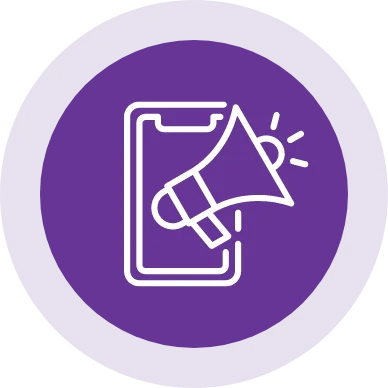Tobacco
Tobacco
Tobacco products are full of chemicals that harm our health. We can reduce our risk of breast cancer by avoiding tobacco smoke.Science Summary
Tobacco smoke and secondhand smoke is a toxic mixture of chemicals and gas. Of the more than 7,000 chemicals in tobacco smoke, at least 250 are known to be harmful. Among those 250 chemicals, at least 69 are linked to cancer. Aromatic amines and 1,3 butadiene are examples of tobacco smoke compounds that increase the risk of breast cancer. Scientific evidence suggests both active smoking and exposure to secondhand smoke may lead to increased breast cancer risk.

We refer below to commercial tobacco, which contains many harmful additives, including nicotine. Traditional or sacred tobacco used by many Native American cultures does not include the same additives and is not covered on this page.
What can I do for my own body and health?
Do your best to steer clear of cigarettes, tobacco products, and vaping altogether. The risk of breast cancer increases with both the duration and intensity of smoking. If you already smoke, the earlier in your life you quit, the lower your risk becomes. If you need help quitting, there are available resources.
What can I do to support the health of my family and friends, and my community?
It’s crucial for everyone to minimize exposure to cigarette smoke, including secondhand and thirdhand smoke lingering on furniture or clothes. Talk to your loved ones (especially kids approaching middle or high school ages) about smoking and breast cancer risk. Support groups for quitting can be a great way to build community in a non-judgemental space.
Often, smoking is a mechanism for coping with stress, so understanding and working with underlying stressors can be helpful. Offer to help your loved ones kick the habit, explore quitting aids, provide healthful distractions to keep their mind off of cravings, and celebrate milestones in their quitting journey.
How can I navigate and get support with any systemic barriers to my health?
Tobacco use is highest among certain groups, including people of color, people who identify as LGBTQ, and people who live in rural areas. These communities often face systemic barriers that make it difficult to quit smoking. These can include lack of access to healthcare and counseling, high cost of treatment, targeted marketing and advertisements, higher levels of stress, and peer pressure. Additionally, many women face stressors that drive them to smoke such as lack of access to healthy, affordable food, unsafe neighborhoods, and insufficient wages to support their families.
Look into your local or state government programs that help people stop smoking. Many states offer free telephone-based quitlines staffed by trained counselors (e.g., California Smokers’ Helpline). State health insurance and community health centers may offer low-cost or free tobacco cessation support. Online support programs and mobile tools can provide resources and a community of like-minded individuals.
“Don’t tell me not to smoke, help me figure out how to end the stressors that lead me to smoke.”
– Participant at a California Breast Cancer Plan Community Meeting
How can I help advocate for and support systemic change to remove barriers to health?
Overall, it is more effective to prevent people from starting to smoke than it is to help people stop smoking. We can greatly reduce smoking in our communities by focusing on youth and implementing school-based interventions to prevent children and young adults from starting to smoke.
California has a long history of leading efforts to reduce tobacco use by effectively implementing bans, restrictions, and smoke-free policies. Between 1988 and 2017, the adult cigarette smoking rate declined by 57.4%, with a current rate of 11.2%.
Here are some ways we can get involved at the systems level:

Reach out to state representatives to ban tobacco sales, including vaping products, in pharmacies.

Work with local, county, and tribal governments to ban tobacco product advertising that targets youth and communities of color.

Advocate for information about tobacco use and breast cancer risk in K-12 public school tobacco-prevention curriculum.

Require all public and private colleges to adopt 100% tobacco-free and vape-free campus policies.

Create culturally tailored anti-smoking and anti-vaping messages with, and for, youth and communities of color.

Support campaigns that create, fund, and promote culturally tailored smoking cessation programs that are accessible online, by phone, and by text.
Resources

Chapter Pullout

Factsheet (English)

Supported by grant funding from Gilead Sciences, Inc. Gilead Sciences, Inc. has had no input into the development or content of these materials.
Types: Fact Sheet, Report




